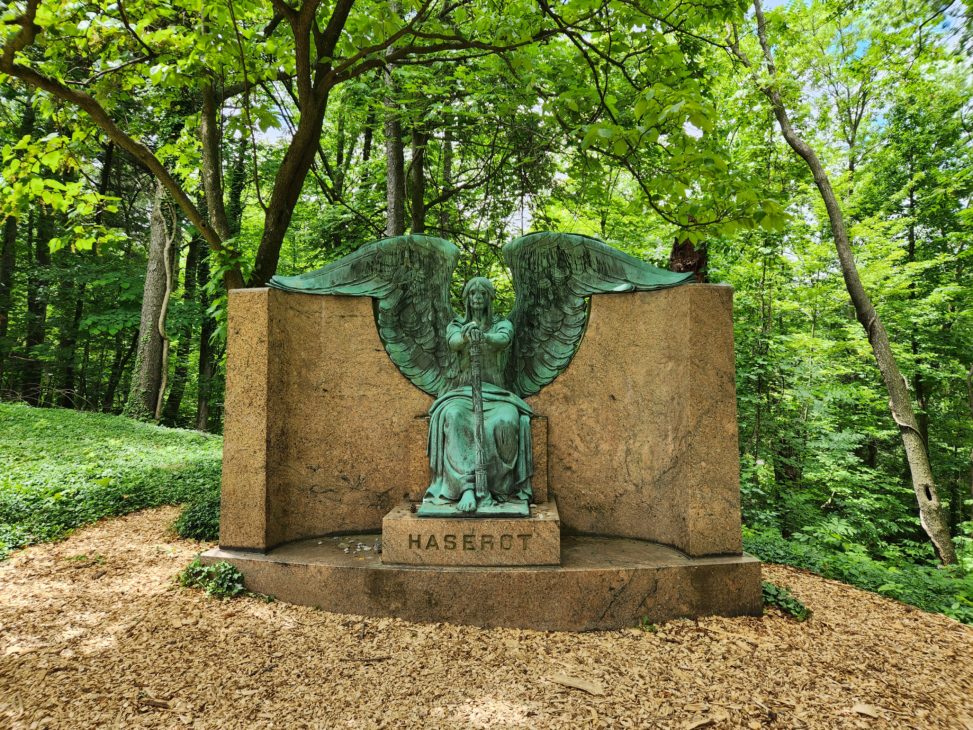Cleveland, OH has so many things to see and do, that we couldn’t fit it all into one trip. And honestly, we went to see a baseball game, not really expecting much else. Which is why I was extremely excited to find all of the fun, unique aspects of this city. One of the most beautiful places that we visited while in Cleveland was the Lake View Cemetery. (Address: 12316 Euclid Ave)
(If you’d like to see an overview of our two days in Cleveland, click here.)
Known for its iconic “residents”, beautiful grounds, unique headstones, and the Wade Memorial Chapel, we could have easily spent several days exploring the 285 acres that make up Lake View Cemetery.

And while it may seem eerie, or morbid, to visit a cemetery for anything other than a funeral, keep in mind that this particular cemetery was designed with the idea of peace and calm in mind. Their tagline, “visit for a day or stay for eternity” is funny, but also well in line with how the entire place is laid out.
The grounds are known as a “garden cemetery”. This means that they were “designed as a rural retreat for urban dwellers to reconnect with the beauty and healing of nature”. There were several people walking while we were there, using it as they would a walking path or a park.
There are flowers, bushes, and all different types of trees that grow all over the cemetery. They even have their own dam, and a pond that is right behind the spectacular Wade Chapel.

Speaking of, if you only have time to see one thing in the Lake View Cemetery, I would recommend the Wade Memorial Chapel.
The Wade Memorial Chapel was built in 1901 in memory of Jeptha Wade, founder of The Western Union Telegraph Company.
Walking up to the chapel, if the doors are open, you catch glimpses of the stained glass window tucked inside. The contrast between the dark, heavy, bronze doors – beautiful in their own right – and the bright, shimmering colors of the window is gorgeous.
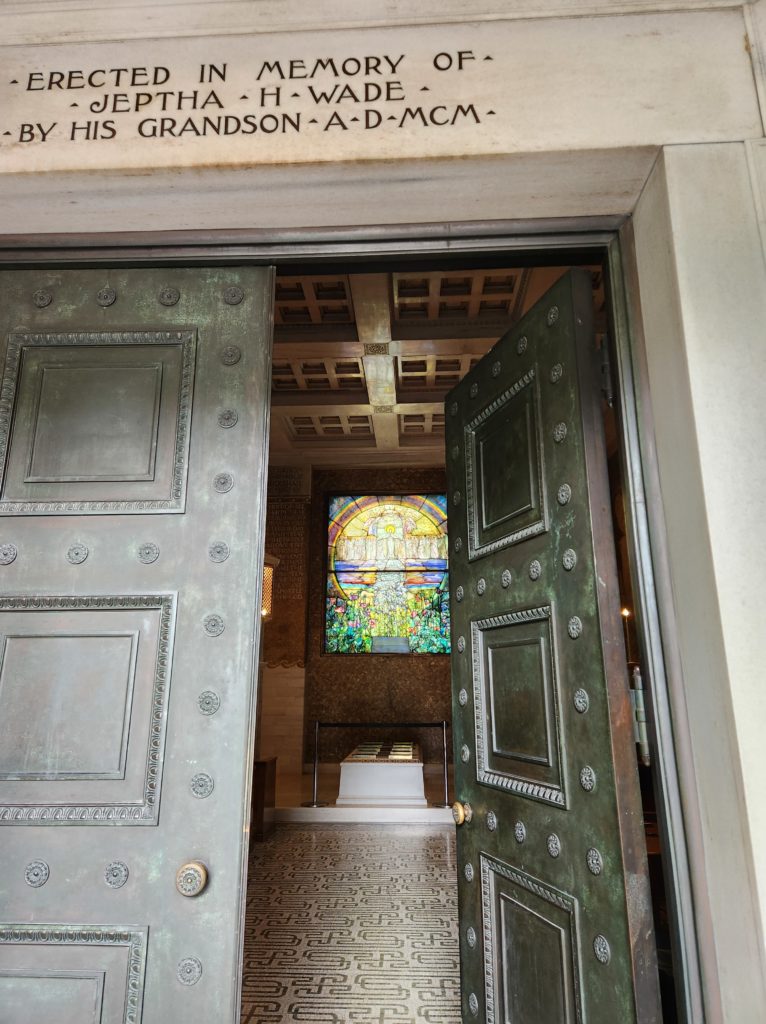

Named “The Flight of Souls”, the window was designed by Louis Comfort Tiffany. (Yes, THAT Tiffany) In fact, according to the cemetery website, the entire interior of the chapel was designed by Tiffany and his studios, and it shows.

Tiny little tiles make up these mosaics, that run all around the interior walls. It was unfathomable to me to think about just how much time all of that took. The care and precision that went into placing each of those tiles in the right position, and the design skills it took to imagine such a piece to begin with.
Be sure to walk over to the row of mausoleums just across from the chapel as well.
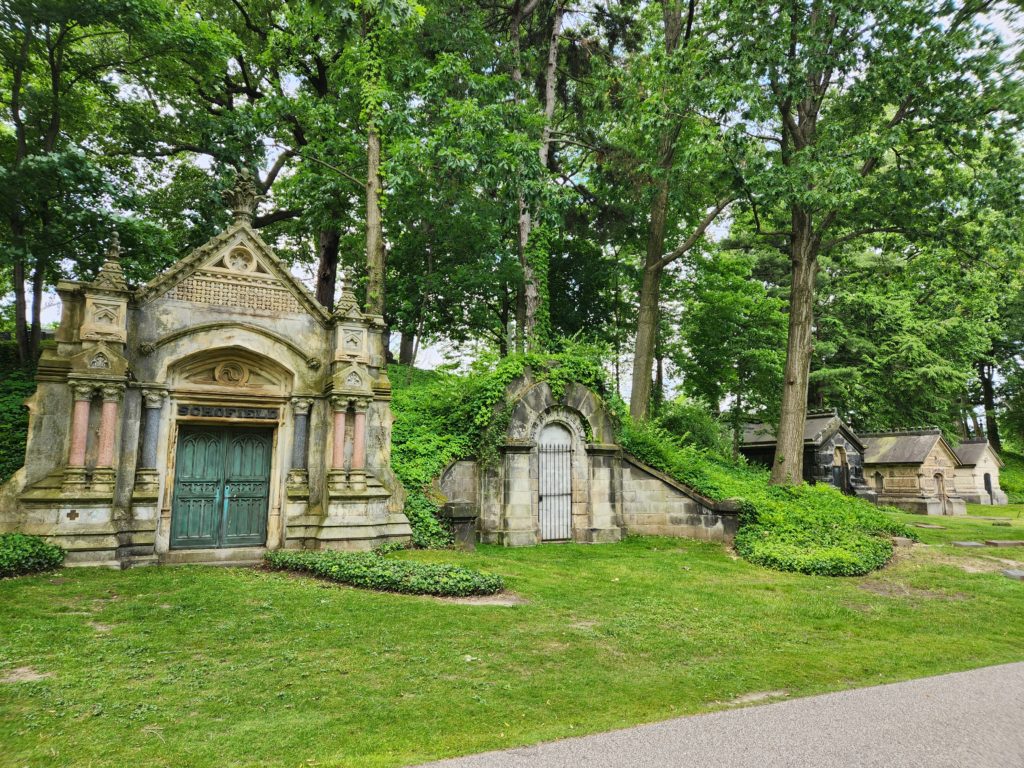
The colors of the stone and metal that was used to build them, aged over time and covered with nature, was beautiful. It was fascinating to see how much money, time, and effort people put into building something like this to honor those who have passed on. At least one of them even had a small stained glass window in the back of it, a shelf to hold mementos, and a bench inside (presumably so loved ones could come visit more comfortably).

To really explore the rest of the cemetery grounds, you need a map of where everything is. It’s that big.
We started out thinking that we could just drive around and stop when we saw something interesting, but quickly found out that wouldn’t work. There were signs leading us to the Wade Chapel, but next on my list was the tombstone for Alan Freed. After driving around for a few minutes, hoping to come across it, we got smart and downloaded a map. Come to find out, the site we were looking for was right behind the chapel. Where we just were. (Cue the forehead slap…haha.)
So, be sure to download a map before going. Or pick up a map on the way in. When we were there, they had them available at the entrance and the Main Office.
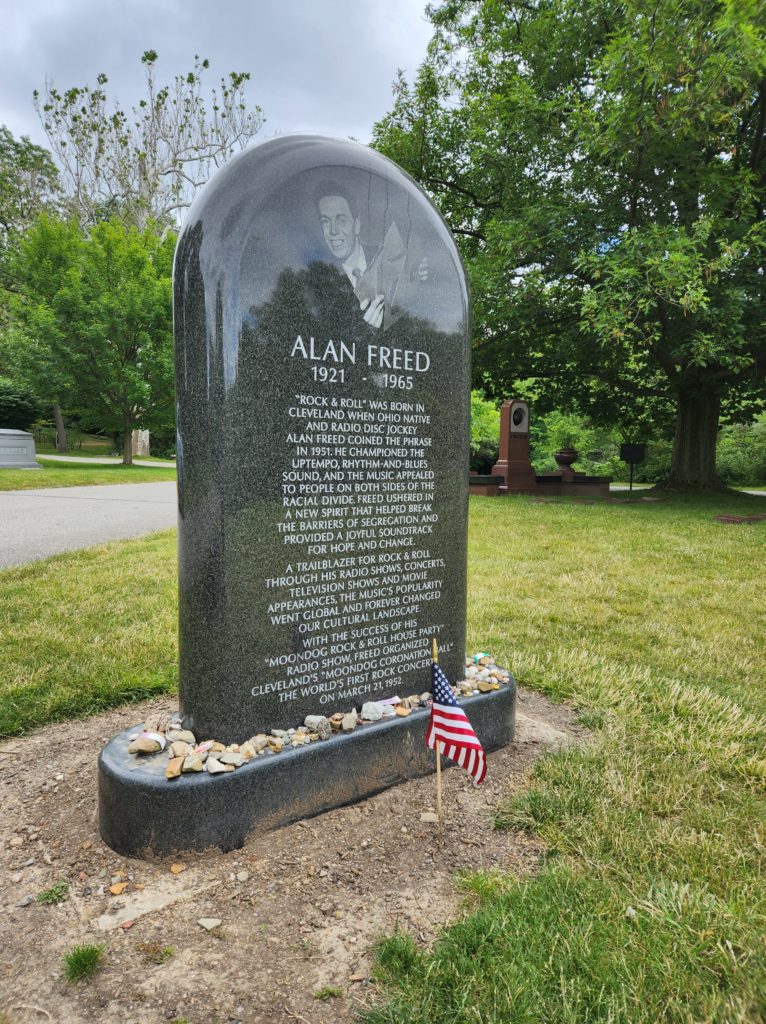
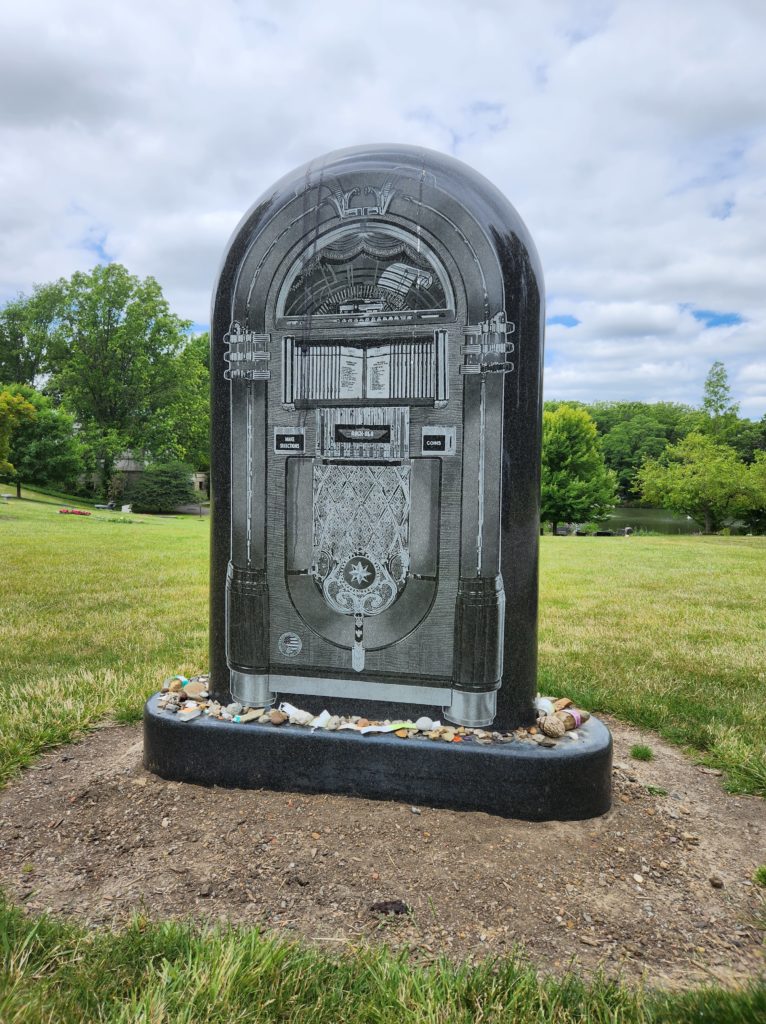
Alan Freed’s headstone was created to look like a jukebox – which is unique in and of itself. But it’s even more appropriate considering Alan Freed was the person who coined the phrase “Rock and Roll” in 1951, and was “known for holding the first rock concert in the world on March 21, 1952”. In Cleveland.
(Consequently, this is why the Rock and Roll Hall of Fame is in Cleveland as well. We didn’t go on this trip, but I’ve been there before, and it’s a fun visit if you’re into music and memorabilia.)
Here are a few of the other tombstones that I found fascinating:
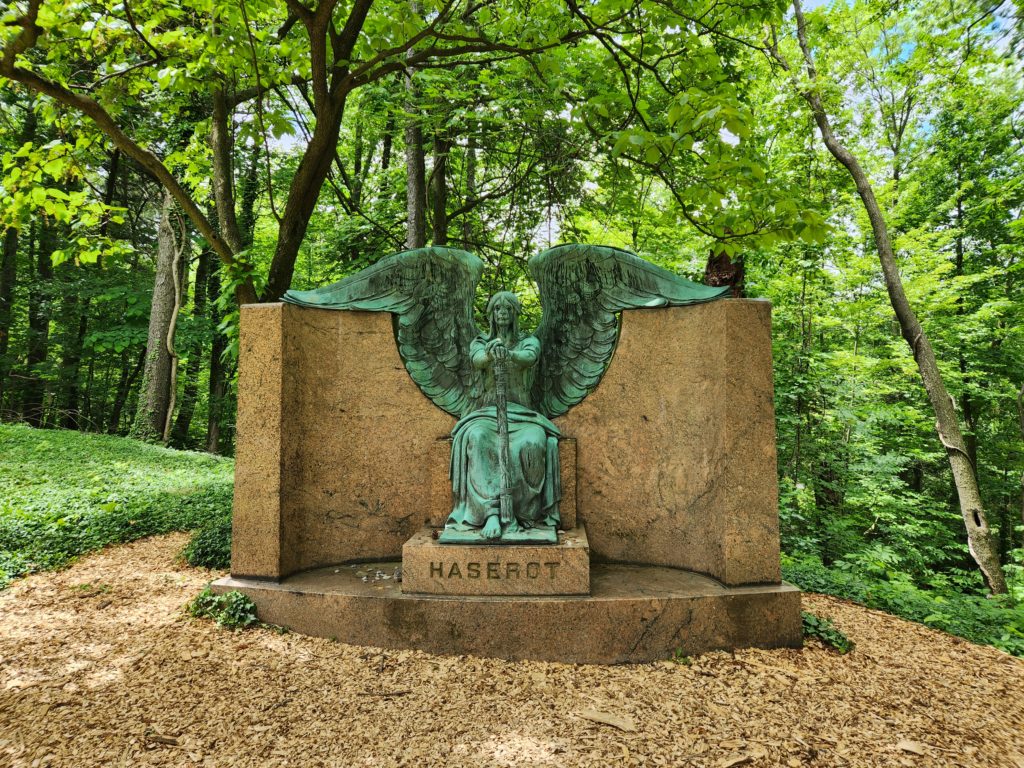
This one was beautiful and eerie all at the same time. If you go looking for it, you’ll find it to the left of the “Hanna” mausoleum. We passed right by it twice before we saw it. It’s tucked back into the corner, under the trees. There is a nice path to it once you find it though, because so many people seek this one out.
This grave marker was created by Cleveland sculptor Herman Matzen in 1923 for the Frances Haserot family. It is life-size, made out of bronze, and holds a torch upside down – which is a symbol of life extinguished. The black tears that you see are actually caused by the aging of the bronze itself, but it gives the angel a very eerie look.
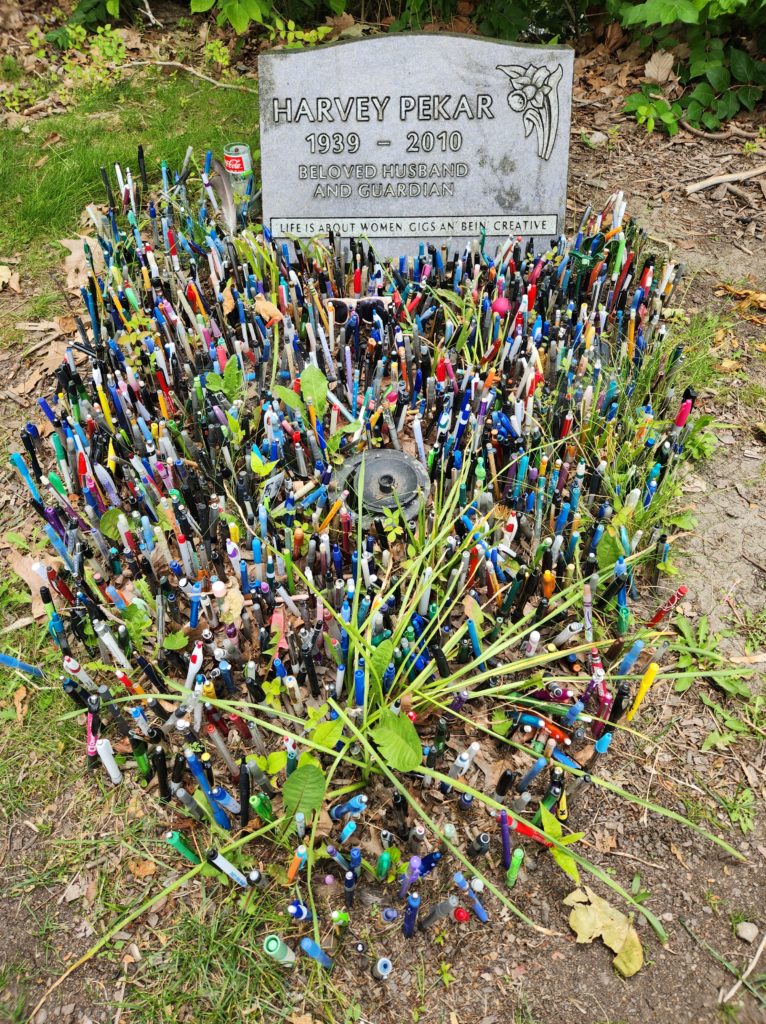
Harvey Pekar was a comic book writer, among many other things, which explains the multitude of writing utensils left at his grave site.
It was interesting to see the different mementos that people had left on the different grave sites. This one was definitely the most unique that we saw.
This is a couple of random tombstones, that I’m not sure on the story behind them, but I thought they were really beautiful.

There were a few things that we missed during our visit, because of the time that we went.
For example, if you go during the spring, you’ll be able to see Daffodil Hill. Which is exactly what it sounds like…an entire hillside covered with beautiful yellow daffodils. We were about a month or so too late to see them this time.
We also missed seeing The Garfield Memorial. It was closed during our visit, for restorations. From the pictures I’ve seen, it’s well worth a stop though, so be sure to check it out.
You can look at the Lake View Cemetery website to see what areas of the park might be closed, get more information on the hours, and also the cemetery itself.
Quotes and information from LakeViewCemetery.com
